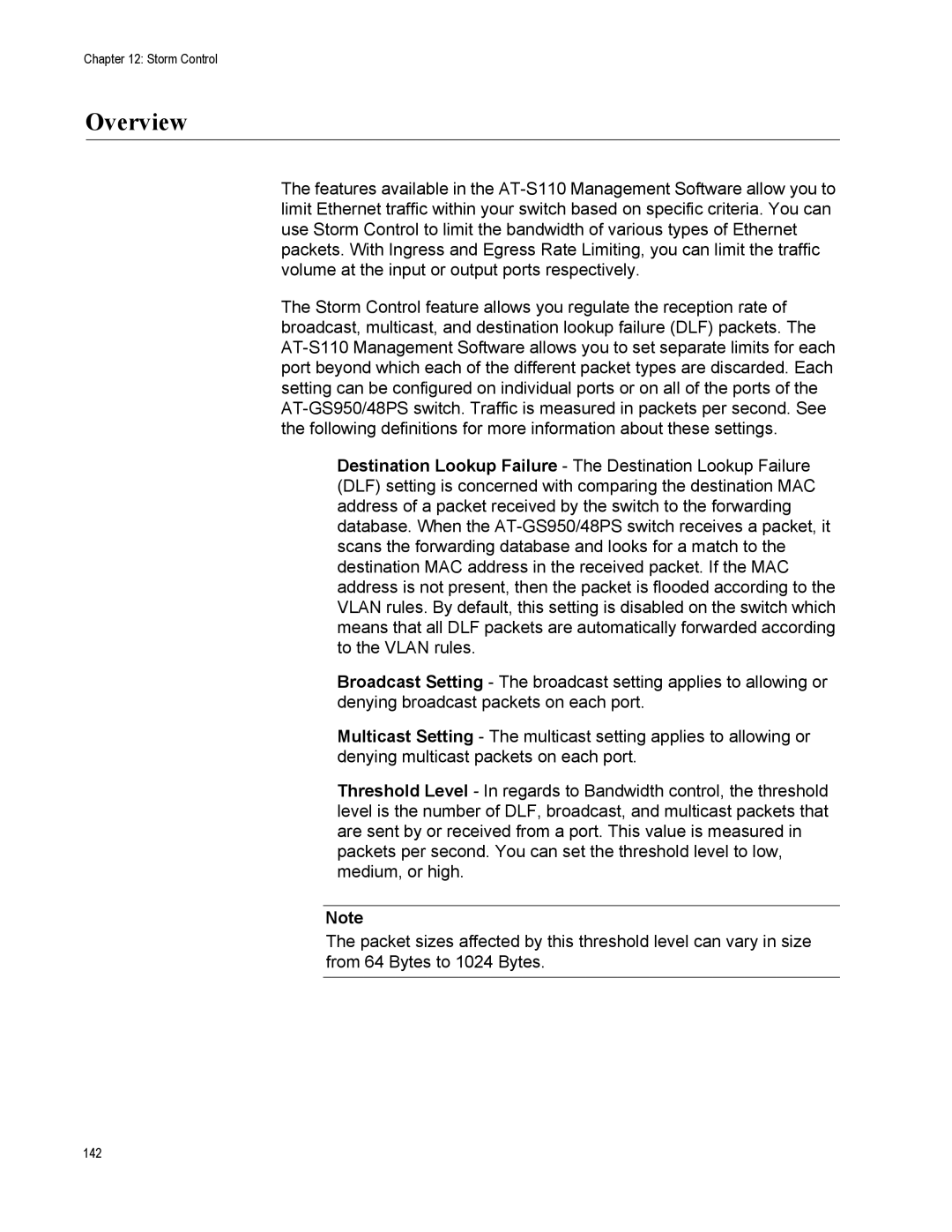Chapter 12: Storm Control
Overview
The features available in the AT-S110 Management Software allow you to limit Ethernet traffic within your switch based on specific criteria. You can use Storm Control to limit the bandwidth of various types of Ethernet packets. With Ingress and Egress Rate Limiting, you can limit the traffic volume at the input or output ports respectively.
The Storm Control feature allows you regulate the reception rate of broadcast, multicast, and destination lookup failure (DLF) packets. The AT-S110 Management Software allows you to set separate limits for each port beyond which each of the different packet types are discarded. Each setting can be configured on individual ports or on all of the ports of the AT-GS950/48PS switch. Traffic is measured in packets per second. See the following definitions for more information about these settings.
Destination Lookup Failure - The Destination Lookup Failure (DLF) setting is concerned with comparing the destination MAC address of a packet received by the switch to the forwarding database. When the AT-GS950/48PS switch receives a packet, it scans the forwarding database and looks for a match to the destination MAC address in the received packet. If the MAC address is not present, then the packet is flooded according to the VLAN rules. By default, this setting is disabled on the switch which means that all DLF packets are automatically forwarded according to the VLAN rules.
Broadcast Setting - The broadcast setting applies to allowing or denying broadcast packets on each port.
Multicast Setting - The multicast setting applies to allowing or denying multicast packets on each port.
Threshold Level - In regards to Bandwidth control, the threshold level is the number of DLF, broadcast, and multicast packets that are sent by or received from a port. This value is measured in packets per second. You can set the threshold level to low, medium, or high.
Note
The packet sizes affected by this threshold level can vary in size from 64 Bytes to 1024 Bytes.

